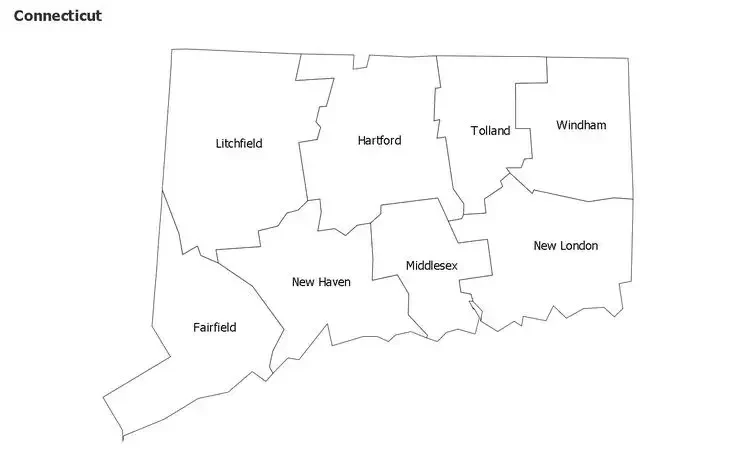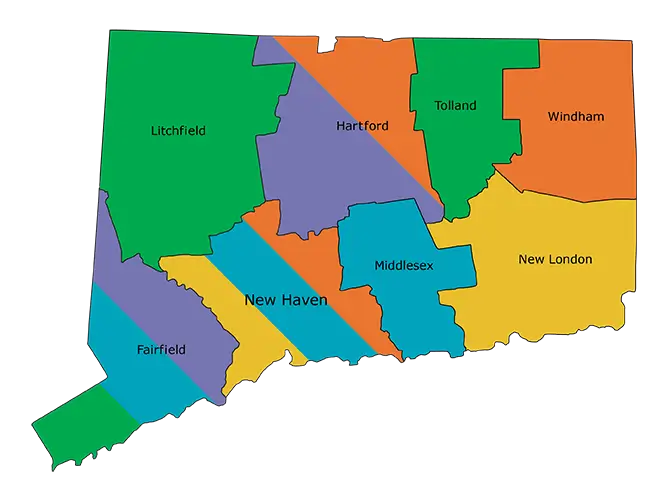Connecticut

Welcome to the world of the Connecticut judiciary system, a fascinating realm where law and order meet justice. This intricate system, woven through the fabric of Connecticut’s history and society, serves as the beating heart of the state’s legal proceedings.
Noteworthy Figures in History
The history of the Connecticut judiciary system is a rich tapestry, threaded with significant figures. The likes of Roger Sherman, the only person to have signed all four great state papers of the U.S., and Ella T. Grasso, the first woman in America to be elected governor without succeeding her husband, have all contributed to shaping the judiciary system.
Evolution Over Time
Like a river carving its path, the Connecticut judiciary system has evolved over time. Early colonial courts, rooted in English common law, gradually transformed into a modern system embracing the principles of fairness, justice, and equal rights for all.
The Connecticut judiciary system, a well-oiled machine, operates on various levels, each with a specific role and responsibility.
Supreme Court
The Supreme Court, the apex of the judiciary hierarchy, is an appellate court responsible for shaping the state’s legal landscape through precedent-setting decisions.
Appellate Court
Just below the Supreme Court, the Appellate Court plays a crucial role, reviewing decisions from the lower courts to ensure adherence to the rule of law.
Superior Court
The Superior Court, the trial court of general jurisdiction, handles a broad spectrum of cases, from civil to criminal, family, and housing matters.
Probate Court
The Probate Court, the guardian of family affairs, handles estate settlements, trusts, adoptions, conservatorships, and other family-related matters.
The Role of the Courts in Connecticut
Maintaining Law and Order
The courts in Connecticut act as the gatekeepers of law and order, ensuring societal harmony by adjudicating disputes and punishing law-breakers.
Dispute Resolution
Dispute resolution is another essential role. Through mediation, arbitration, or litigation, the courts help to resolve disagreements, fostering peace and stability.
Upholding the Constitution
Moreover, the courts bear the crucial responsibility of upholding the constitution, safeguarding the citizens’ rights and freedoms.
Notable Cases in Connecticut Courts
Connecticut courts have presided over several noteworthy cases, significantly impacting the state and national legal landscape. These cases range from high-profile criminal trials to landmark civil rights cases.
The Future of the Connecticut Judiciary System
Technological Advancements
As we gaze towards the future, technological advancements loom large
on the horizon. The rise of digital tools, from online case management systems to virtual courtrooms, promise to streamline operations and enhance accessibility.
Reforms and Challenges
However, the future also poses challenges. The need for reforms, such as addressing systemic bias and improving legal access for marginalized communities, remains ever-present. The Connecticut judiciary system, ever dynamic, continues to evolve to meet these challenges head-on.
Conclusion
The Connecticut judiciary system, steeped in history yet forward-looking, remains a cornerstone of the state’s societal fabric. Its courts, from the Supreme Court to the Probate Court, play essential roles in maintaining law and order, resolving disputes, and upholding constitutional rights. With the promise of technology and ongoing reforms, the system continues to adapt and grow, striving always to deliver justice for all.
FAQs
1. What is the highest court in the Connecticut judiciary system?
The Supreme Court is the highest court in Connecticut.
2. What types of cases does the Connecticut Superior Court handle?
The Superior Court is a trial court that handles a wide range of cases, including civil, criminal, family, and housing matters.
3. How has the Connecticut judiciary system evolved over time?
The Connecticut judiciary system has evolved from its roots in colonial courts based on English common law to a modern system upholding fairness, justice, and equal rights for all.
4. What role does technology play in the future of the Connecticut judiciary system?
Technology promises to streamline court operations and enhance accessibility through tools like online case management systems and virtual courtrooms.
5. What are some of the challenges facing the Connecticut judiciary system?
Some of the challenges include addressing systemic bias, improving access to legal services for marginalized communities, and adapting to technological advancements.
Counties in Connecticut
Probate courts
Superior courts
Appallete court
Supreme Court
Counties in Connecticut
in
Circuit court
Here are all of the Counties located in the Connecticut Estate.
Probate Courts
County court
Detail of every Probate Court is here.
Hartford
West
Tobacco Valley
Greater Windsor
East
Glastonbury-Hebron
Newington
Berlin
Simsbury Regional
Farmington and Burlington
North Central Connecticut
Ellington
Greater Manchester
Region #14
Middletown
Meriden
Wallingford
Cheshire-Southington
Region #19
Waterbury
Naugatuck
Region #22
Torrington Area
Litchfield Hills
Mansfield-Tolland
Northeast
Plainfield-Killingly Regional
Windham-Colchester
Norwich New London
Southeastern Corner Regional
New London
Region #32
Saybrook
Madison-Guilford
Branford-North Branford
East Haven-North Haven
Hamden-Bethany
New Haven
West Haven
Milford-Orange
Derby
Shelton
Danbury
Housatonic
Northern
Trumbull
Stratford
Bridgeport
Fairfield
Westport
Norwalk
Darien-New Canaan
Stamford
Greenwich
Superior Courts
Superior Courts
Superior Courts
Here are all of the Superior Courts located in the Connecticut Estate.
Ansonia/Milford
Danbury
Fairfield
Hartford
Litchfield
Middlesex
w Britain
New Haven
New London
Stamford/Norwalk
Tolland
Waterbury
Windham
See Other Courts in US
Alabama | Alaska | Arizona | Arkansas | California | Colorado | Connecticut | Delaware | Florida | Georgia | Hawaii | Idaho | Illinois | Indiana | Iowa | Kansas | Kentucky | Louisiana | Maine | Maryland | Massachusetts | Michigan | Minnesota | Mississippi | Missouri | Montana | Nebraska | Nevada | New Hampshire | New Jersey | New Mexico | New York | North Carolina | North Dakota | Ohio | Oklahoma | Oregon | Pennsylvania | Rhode Island | South Carolina | South Dakota | Tennessee | Texas | Utah | Vermont | Virginia | Washington | West Virginia | Wisconsin | Wyoming

